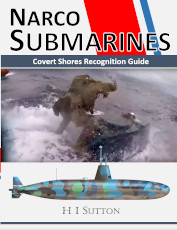 This article relies heavily on information from Fredrik Granholm and others. Information and corrections welcome. Contact the author HERE
This article relies heavily on information from Fredrik Granholm and others. Information and corrections welcome. Contact the author HERE

Type-XXIX-H stealth U-boat design, 1944
 The unbuilt Type-XXIX-H U-Boat design was intended to replace the ubiquitous Type-VIIC U-Boat family. Over 700 VIIs were built and they formed the backbone of the Kriegsmarine throughout the war, but by 1945 they were increasingly dated. So a new mass-service design for the North Atlantic was considered.
The unbuilt Type-XXIX-H U-Boat design was intended to replace the ubiquitous Type-VIIC U-Boat family. Over 700 VIIs were built and they formed the backbone of the Kriegsmarine throughout the war, but by 1945 they were increasingly dated. So a new mass-service design for the North Atlantic was considered.

Type-VIIC
Germany had a number of other advanced submarine programs but the famous Type-XXI 'Elektroboote' was too expensive and the advanced Type-XXVI relied on difficult to obtain chemicals to propel it (see ‘Influences’ section below) so the Type-XXIX was conceived as a relatively modest design, albeit incorporating the latest thinking.
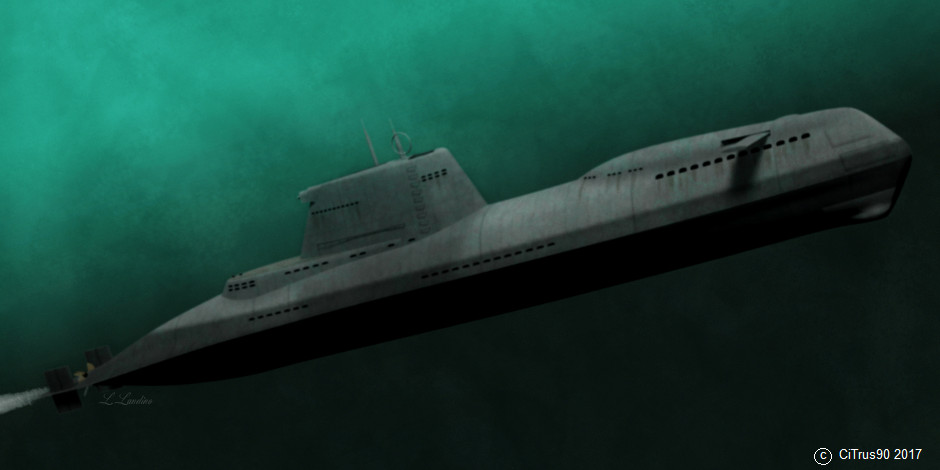
Render of 3d model of Type-XXIX-H by CiTrus90
The Type-XXIX concept (Roman numerals for Type-29) was a series of 9 hull concepts. These ranged from 681 tons up to 1,035 tons and had between six and twelve torpedo tubes. Only plans for the -H model seem to have survived the war, and these are the basis of this article.

Get The essential guide to World Submarines
This Covert Shores Recognition Guide Covers over 80 classes of submarines including all types currently in service with World Navies.Check it out on Amazon
Cutaway
Original artwork. CLICK for high-resolution image.
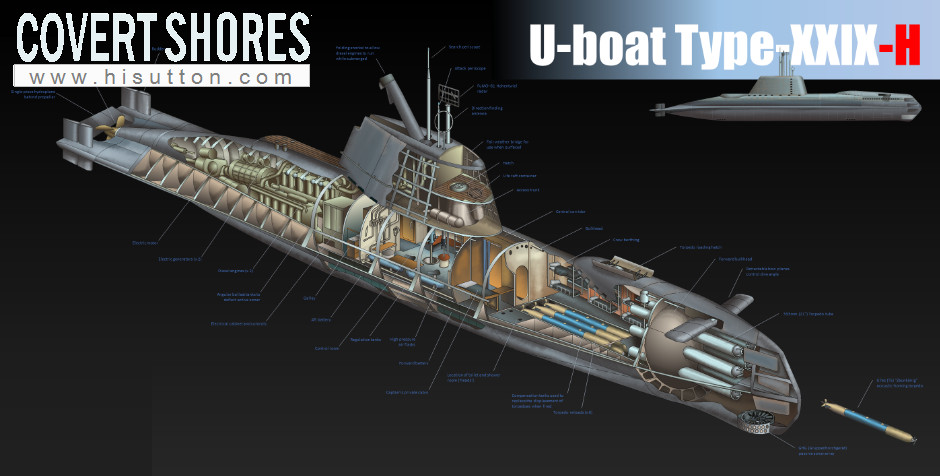
Stealth
The Type-XXIX-H was the first submarine to incorporate stealthy shaping into the design. Even today only one or two of the latest designs hint at this. The faceted sides and angled sail were similar to the F-117 stealth fighter but instead of deflecting radar waves, it was intended to deflect active sonar pings from enemy warships.
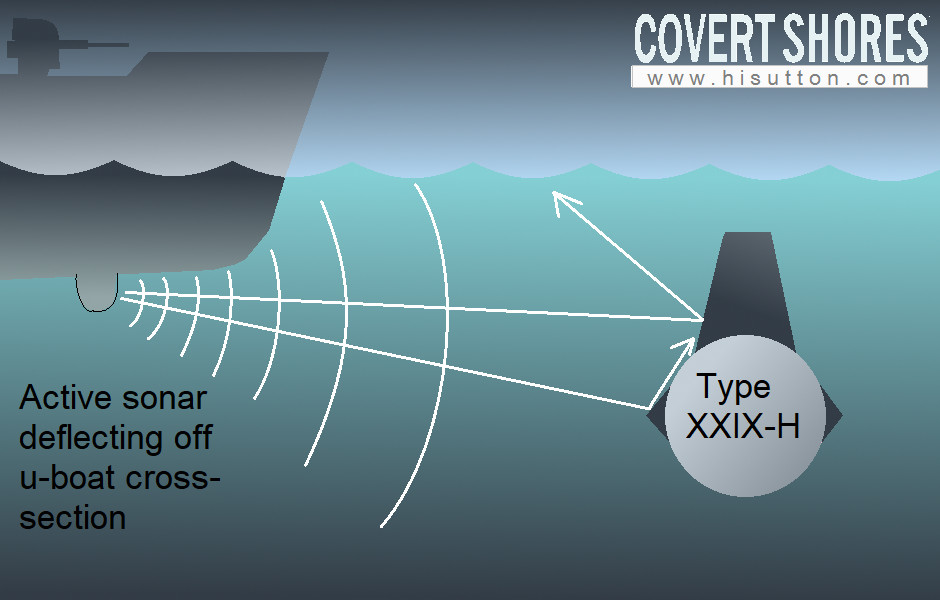
How effective it would have been is difficult to say, and similar forms were not adopted in production submarines in the postwar years although this may have been through lack of awareness, or the shift to passive sonar (against which this has no impact) as the main means of detecting submarines.
Specification
Displacement: 715 tons
Length: 52 m
Beam: 6.4 m
Draft: 4.7 m
Speed: 13 knots surfaced, 15.5knots submerged
Operating depth: TBC
Range: 9,000 nm snorkelling at 10 knots, 120 nm submerged on batteries at 6 knots
Propulsion: 1 x 580 hp diesel engine, 1 x 580 hp deisel generator, 1 x 1400 hp electric motor and 1 x 70 hp silent 'creep' engine
Crew: 27
Armament: 6 x 533mm (21") torpedo tubes with a total of 12 torpedoes
Influences
The Type-XXIX-H built on previous designs, primarily the Type-XX1 U-boat ('Elektroboote') which is rightly considered the most advanced submarine of World War Two. Up to this point submarines had operated mostly on the surface, especially during long transits. The ‘Elekroboote’ used its snorkel (a Dutch invention!) to remain substantially submerged even when running on its diesel engines – the snorkel provided air for the engines. Another advancement was that all the torpedo tubes were in the bow, and the deck guns used for attacking merchant vessels were removed. This reflected operational lessons and the realities of the Allies’ dominant anti-submarine capabilities.
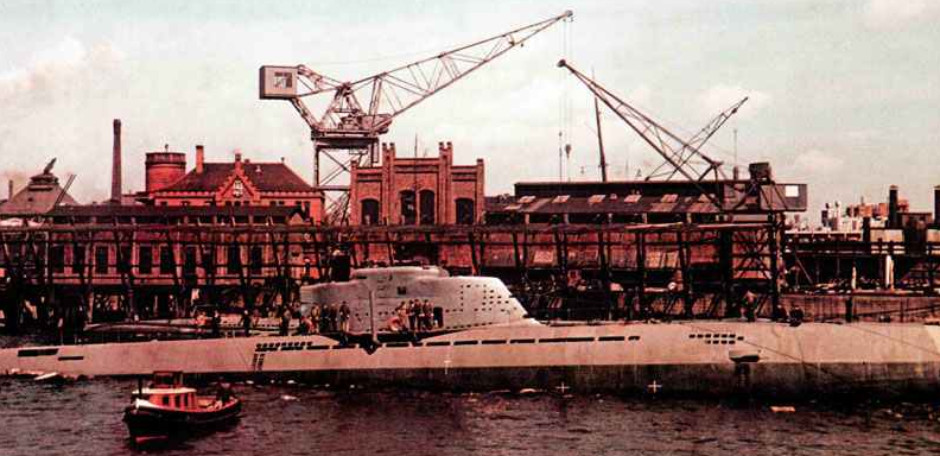
Pictures from WW2 Weapons
The similarly advanced Type-XXIII coastal U-boats were more numerous than the larger Type-XXI and achieved a good degree of operational success in the final months of the war, scoring five vessels sunk by just six fully operational boats. These were much smaller than the Type-XXIX-H design, with the main comparative limitation being that they only carried two torpedoes versus the XXIX-H’s twelve.
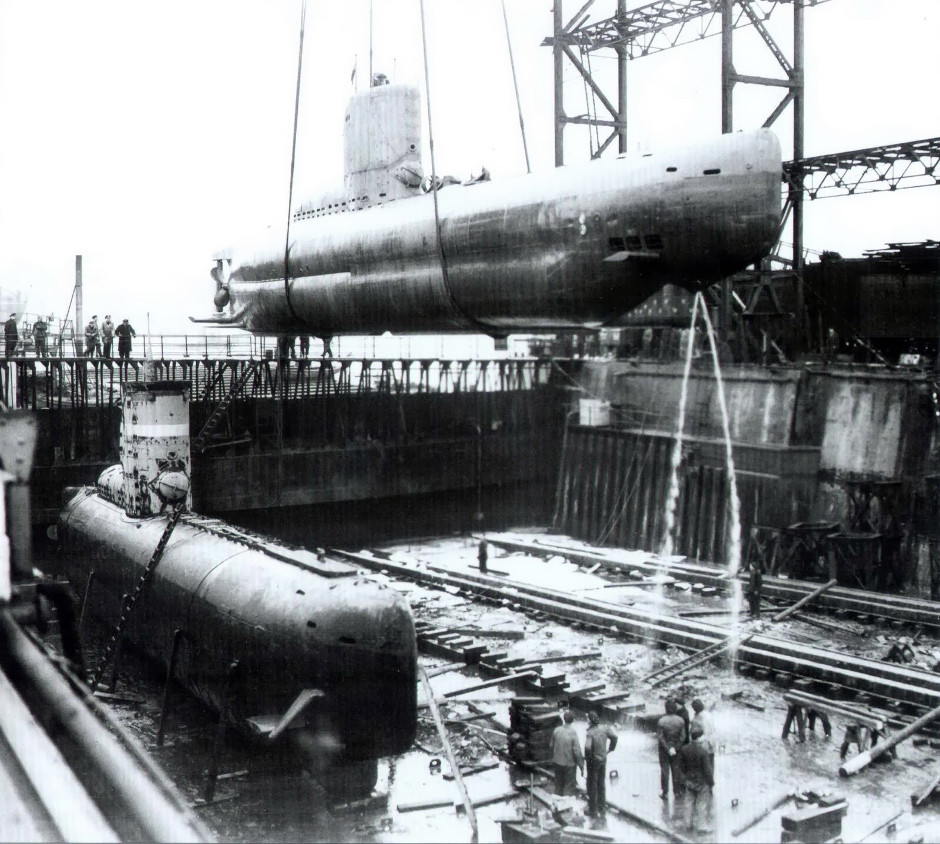
The World's ONLY Guide to
Narco Submarines
10 years of research, analyzing over 160 incidents, condensed into a handy guide. This unique book systematically breaks down the types and families. With detailed taxonomy, recognition 3-views, profiles and photos. Available on Amazon
Some earlier Type-VII U-boats were also fitted with a snorkel which folded into the forward deck casing, and had their deck guns removed, making them much more modern in operational terms but still a relatively dated core design:
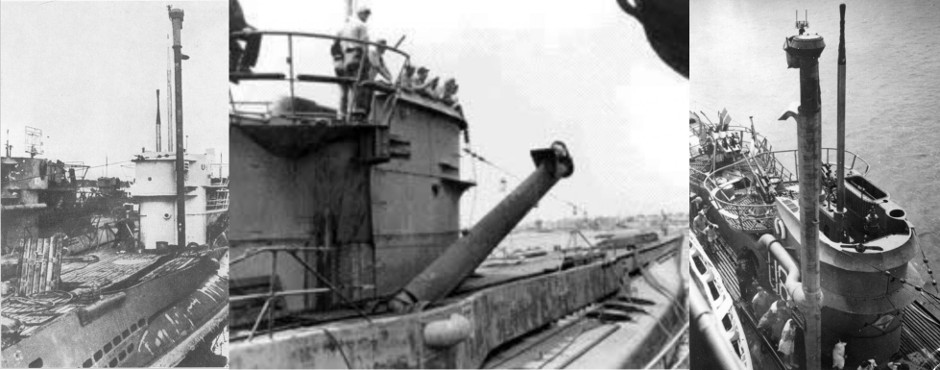
German Engineers were also working on a wholly new form of submarine propulsion which promised very high underwater speeds. Instead of using batteries and an electric motor to power the Type-XVII U-boat, they used decomposing hydrogen-peroxide to produce steam, which in turn drove a turbine and drove the propeller. This process did not require a fresh air supply so the motor could be run while the submarine was submerged and is known today as Air-Independent Propulsion (AIP). The man behind this ingenious propulsion system was Professor Hellmuth Walter who first patented the basic idea of AIP in 1925. Gradually his ideas were taken seriously and he was able to build an experimental submarine called V-80 in 1939. This was capable of an incredible 23 knots submerged (some sources say 28 knots) compared to the typical 6-8 knots of regular submarines. The outbreak of war slowed development but eventually an operationally capable boat was produced, the Type- XVII u-boat. However, this revolutionary form of propulsion was never adopted operationally.
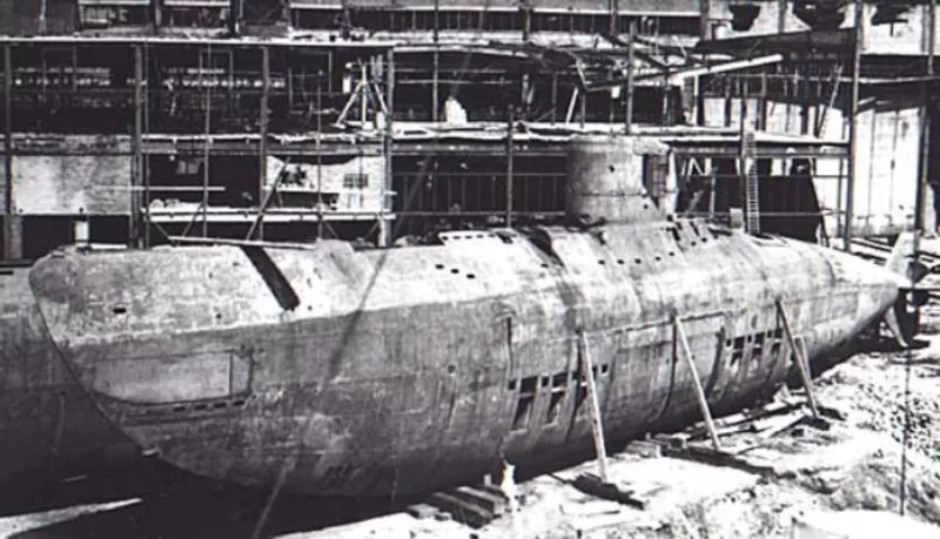
Type-XVII u-boat.
Legacy
Although we cannot be sure, the Type-XXIX-H may have had an influence on the postwar Type-206 submarine which shared many features.

Related articles (Full index of popular Covert Shores articles)

 Japanese Ha201 Sen-Taka-Sho fast attack submarine of WW2
Japanese Ha201 Sen-Taka-Sho fast attack submarine of WW2

 First DDS - Type-IIIA U-Boat
First DDS - Type-IIIA U-Boat

 MSV-75 midget sub design
MSV-75 midget sub design

 WW2 German Delfin midget submarine with AIP
WW2 German Delfin midget submarine with AIP

 Narwal / Orca Dry Combat Submersible (UWTG)
Narwal / Orca Dry Combat Submersible (UWTG)

 Sweden's nuclear powered submarine project (A-11A)
Sweden's nuclear powered submarine project (A-11A)

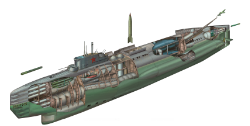 Stalin's Super Sub, Project P-2
Stalin's Super Sub, Project P-2





 Nordenfelt steam powered submarines of the 1880s. w/Cutaway
Nordenfelt steam powered submarines of the 1880s. w/Cutaway
THE book on Special Forces subs Covert Shores 2nd Edition. A world history of naval Special Forces, their missions and their specialist vehicles. SEALs, SBS, COMSUBIN, Sh-13, Spetsnaz, Kampfschwimmers, Commando Hubert, 4RR and many more.
Check it out on Amazon


